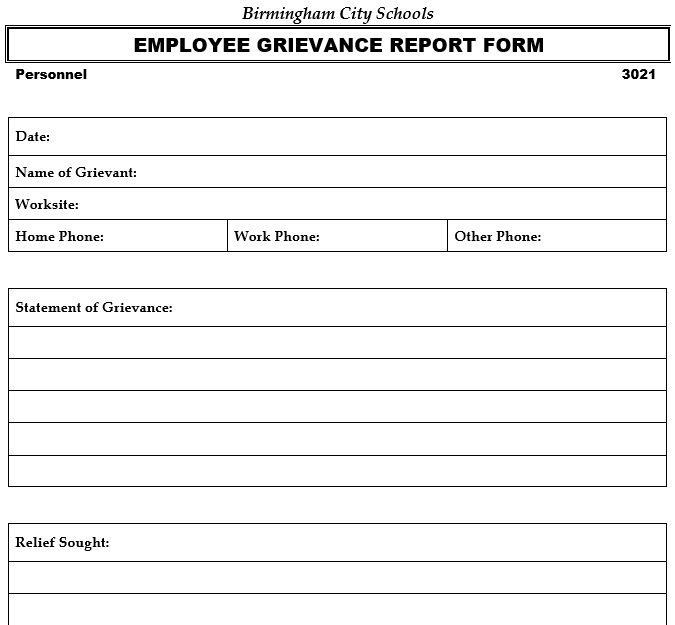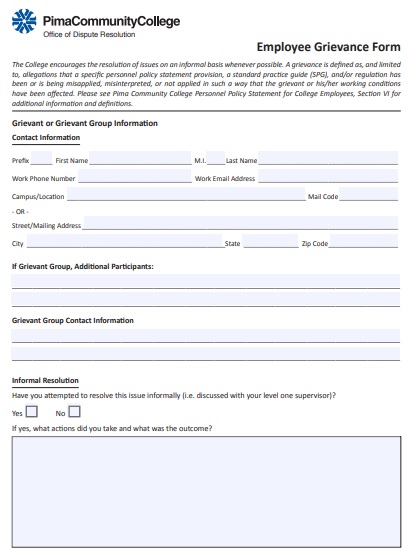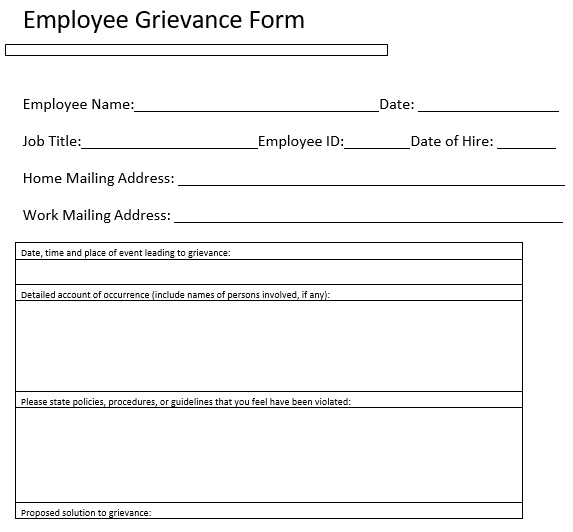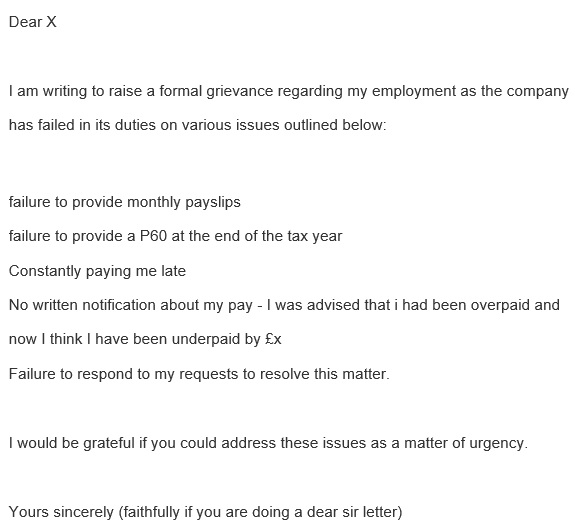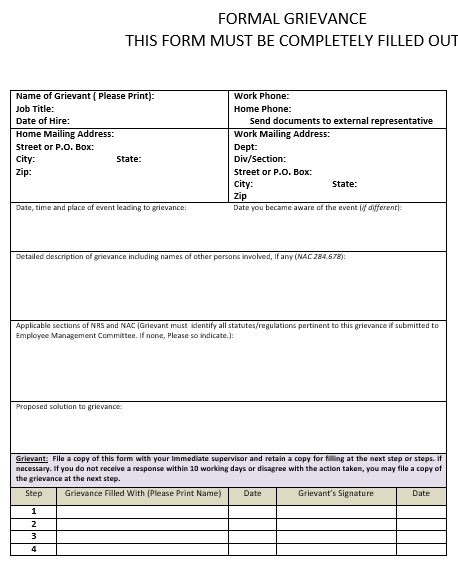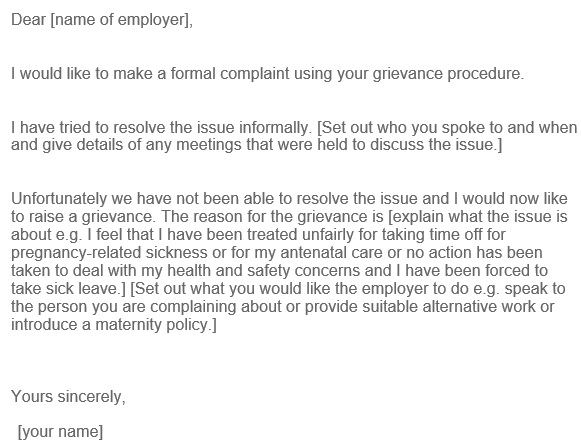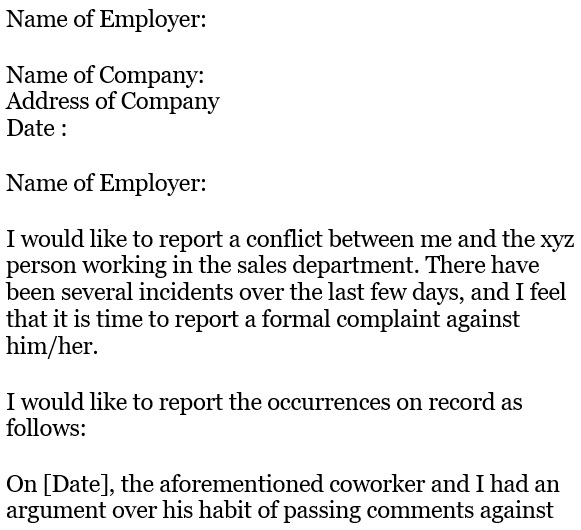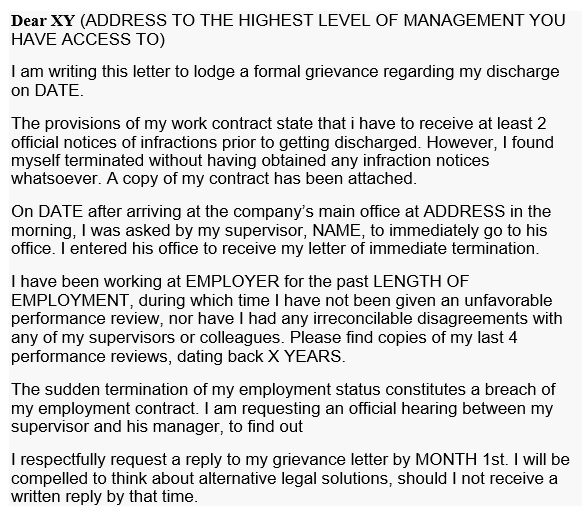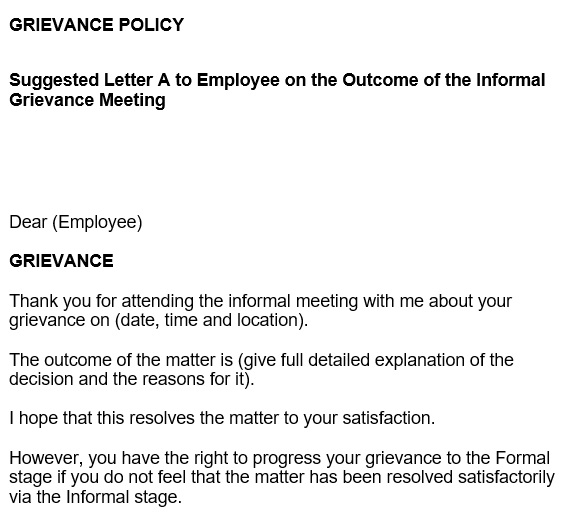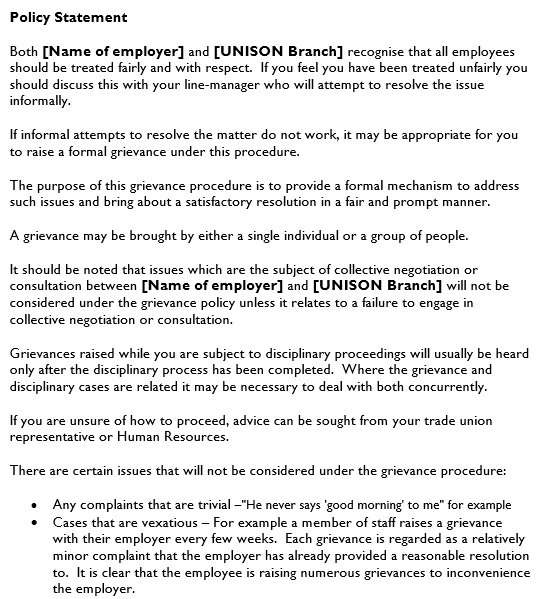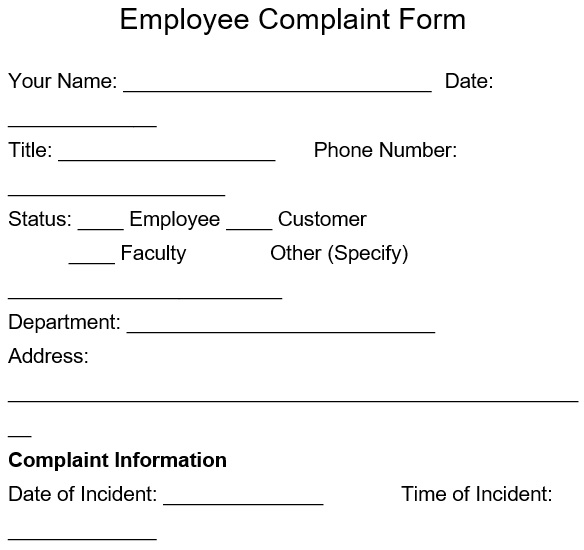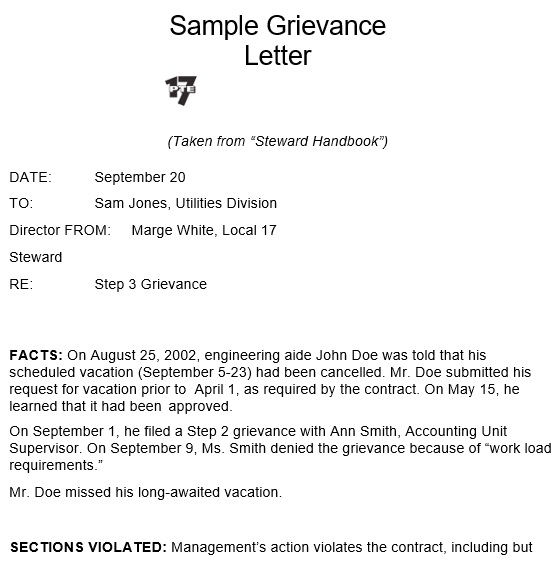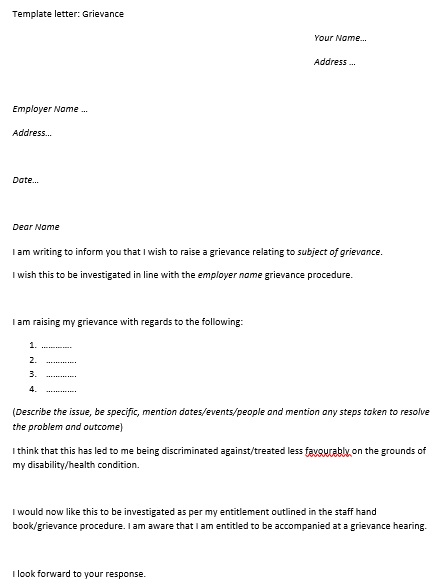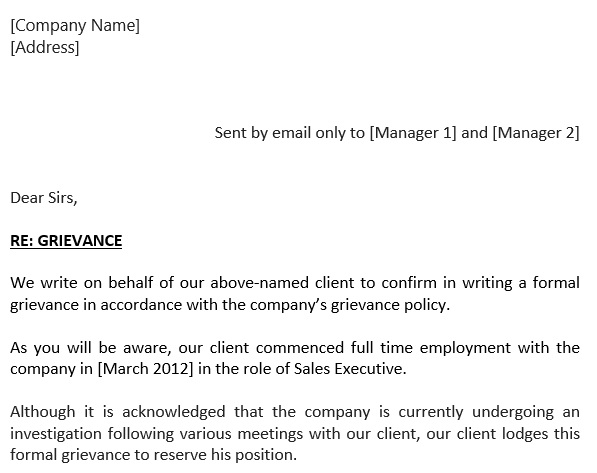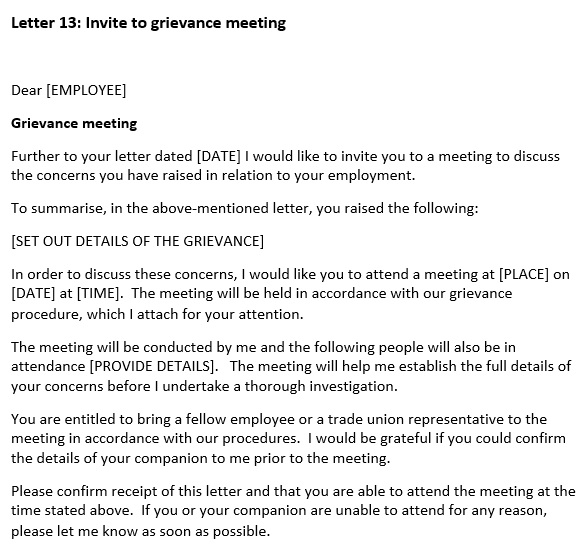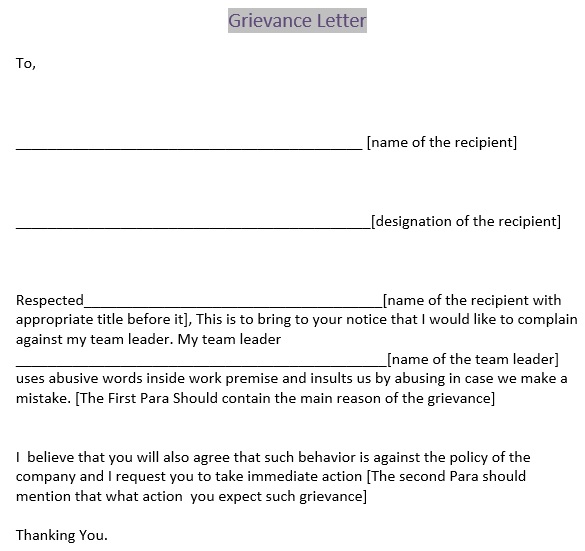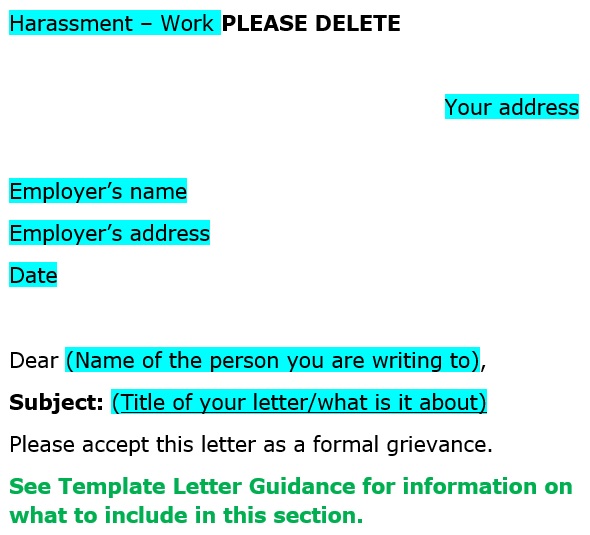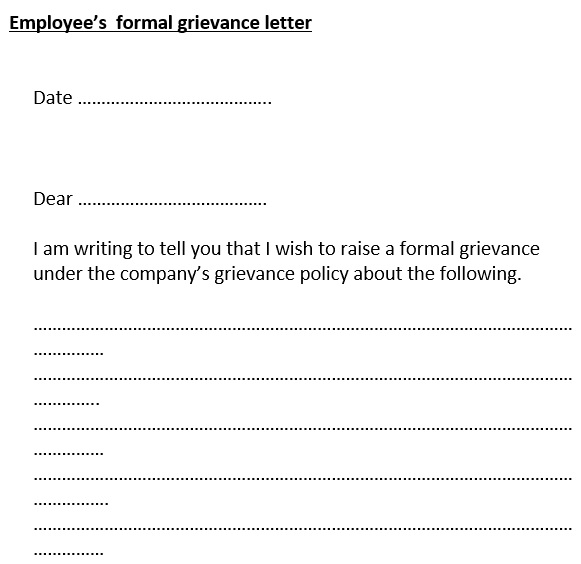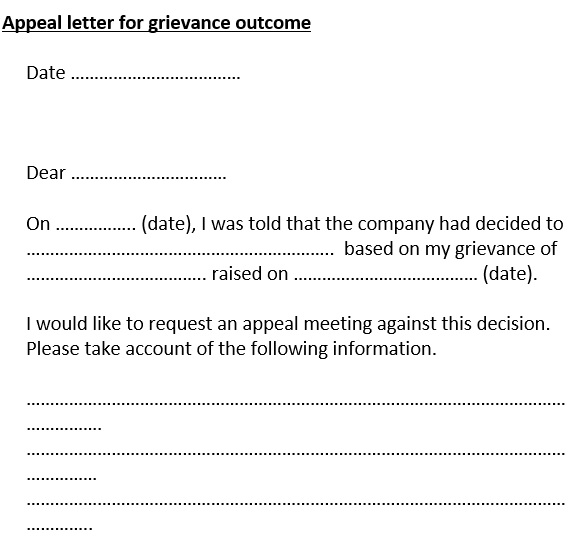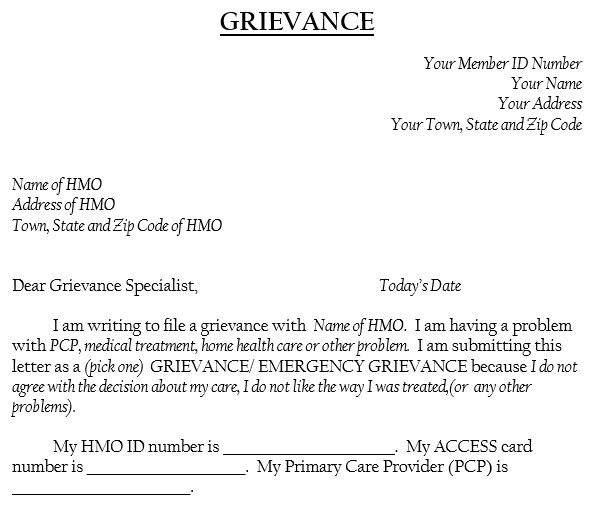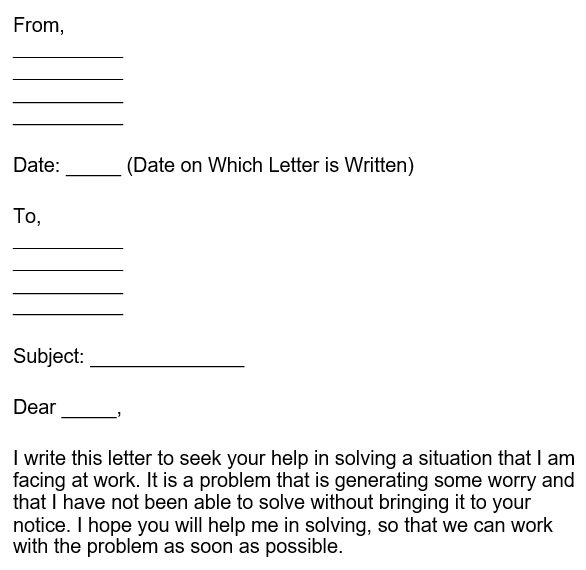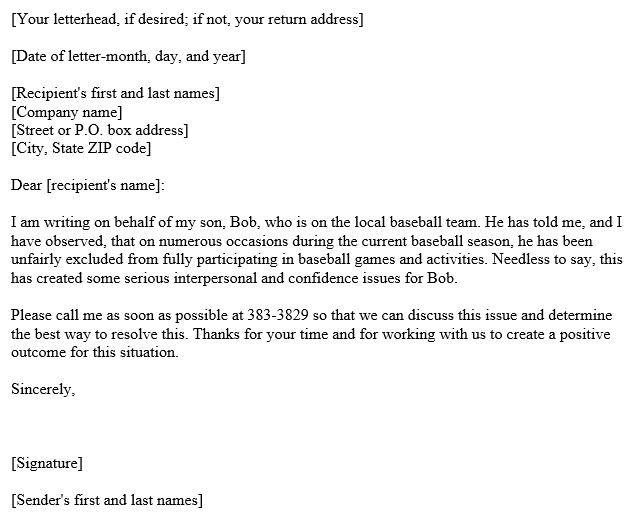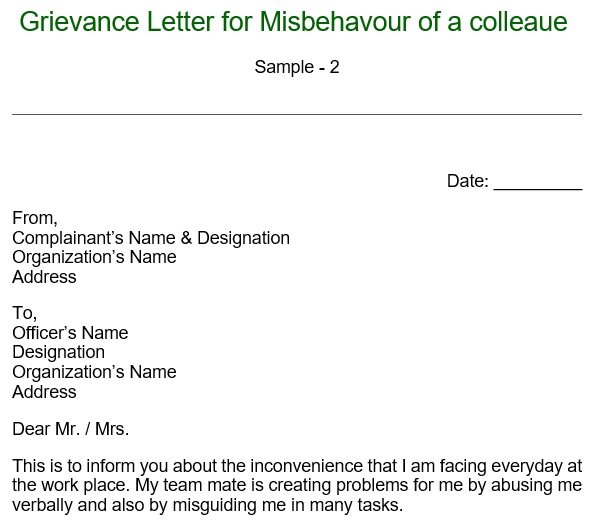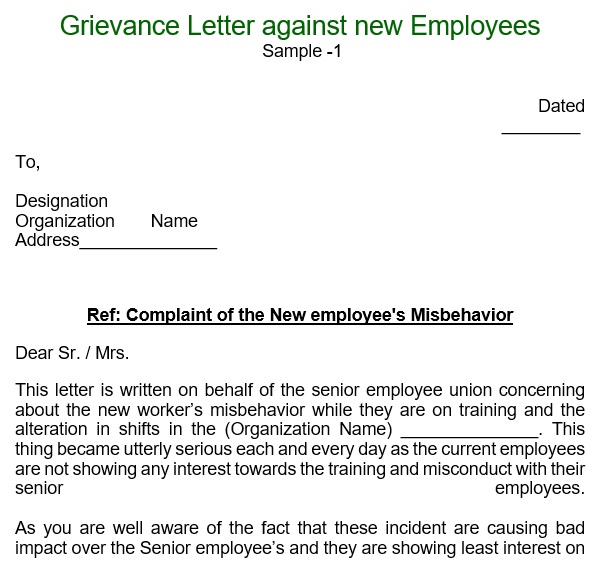A grievance letter template is used by an employee to file a formal complaint at work. This is the first step when you need to file a grievance. The letter should contain your complain in full details so that your employer can start investigating your claims. The employee may address unfair treatment in the letter.
Table of Contents
- 1 What is a grievance?
- 2 When to use a grievance letter?
- 3 What to include in a grievance letter?
- 4 Responding to a grievance:
- 5 How to write a grievance letter?
- 6 Here are some tips that what you have to put in your grievance letter;
- 7 Why do you require a grievance letter?
- 8 The advantages of writing a grievance letter:
- 9 Conclusion:
- 10 Faqs (Frequently Asked Questions)
What is a grievance?
At the office, you may encounter a grievance at one point. There are different situations which may happened due to unfulfilled promises, unsatisfactory circumstances, etc. Basically, a grievance is a complaint that an employee has due to unfair treatment in the workplace.
Grievances usually arise when employee experience issues with their salaries, the company’s policies, and unsafe conditions in the workplace. Furthermore, if customers experience poor service from employees then they also raise grievances.
When to use a grievance letter?
To write a grievance letter, you can use the template or can write one yourself. The letter is usually written to file a formal complaint. This letter covers different situations. Here are some situations wherein you may write a letter;
- In order to make a formal complaint about a particular condition.
- At work, when you are getting tortured.
- Due to unfair treatment.
- Unsafe situations
- When there has been a breach in your contact.
Your letter should be brief and contain the following information;
- A detailed description of the complaint
- When the grievance started
- Detailed how you have solved the issue
- A potential solution to the problem
What to include in a grievance letter?
A grievance letter should include the following details;
- An explanation of your grievance
- When your grievance has begun
- Specify the previous steps that you have taken to address the issue
- Potential solutions to solve the issue
- An option given by someone at the meeting while discussing your grievance
Responding to a grievance:
Performing a review of the employee’s allegations is the first step an individual must take after receiving a grievance letter. In order to avoid developing of a small issue into one that would be too difficult to resolve, you should response to the employment complaint quickly and effectively. During the review, the letter’s recipient should investigate all of the sides of the issue. Also, they have authority to change their initial decision in case during the interview they receive any new information.
How to write a grievance letter?
During writing this letter, keep in mind the following basic steps;
- You should keep a grievance letter to the point. Include adequate details so that authorities can investigate your grievance properly. Don’t go off point because it won’t solve your issue. Moreover, it can also confuse the readers. Involve the following details;
1- The exact date and time when the grievance occurred
2- The location where it took place
3- The people involved in the incident, mention their names.
4- The names of the persons who were present when the incident occurred - Stick to facts and don’t make assumptions when you don’t have proof.
- You should use professional languages instead of using profanities, offensive or abusive language.
- While explaining the situation try to avoid using emotive language.
- Your letter should be addressed to appropriate person. To get knowledge about how to write a letter and how to raise or file a grievance, check the grievance procedures of your company. For example, in case of employment grievance letter, you have to send it to the employer. But if you have a complaint about your employer then sends the letter to his superior. It’s also better to send a copy of the letter to the HR department.
Here are some tips that what you have to put in your grievance letter;
- You have to be as specific as possible. For instance, if you don’t get your salary or you may feel you haven’t got enough compensation then state humbly that how much you think the company owes you.
- If your grievance is about different events, you should explain them in the chronological order.
- You can also speak about how the incident happened before or after an incident if you don’t remember the exact time and date of the event.
- If you are working in a large company then there is no need to write the name of people involve in your grievance. You should explain their roles or indicate their job titles.
- Provide a detailed description of the issue you have faced. Also, state that how these have impacted on your performance at work.
- If you have any evidence that may support your grievance, mention them. For example, if you have any witnesses or concrete documents supporting your claims then include them in your letter. Moreover, you can also state that you have proof and you can give it to them if they ask for it.
- In some cases, just providing the issue of the problem isn’t enough. You should also provide suggestion that how the company can solve this issue. If you feel comfortable then ask for compensation.
- Include a rational solution to your grievance in your letter. You have to ensure that your suggestion is within reason. Your main aim is to make things better. Never ask for something which you feel the company owes you.
- Adding a warning isn’t a requirement in a grievance letter. However, this might be important in some situations.
- You should also include the details of your effort in the letter. You can also indicate that why your first attempt didn’t work out.
- In the closing, use a polite and expectant tone. Your last paragraph should be written in such a way that compels the employer to reply your grievance.
- Before printing it out, proofread the letter. The letter doesn’t contain any grammatical or spelling mistakes. Most importantly, affix your signature and date the letter.
Why do you require a grievance letter?
You require a grievance letter when you have to raise a formal complaint regarding a problem at work. This letter covers various different situations that may lead to a complaint such as;
- Discrimination
- Bullying
- Health and safety concerns
- Breach of contract
The advantages of writing a grievance letter:
You should use the formal grievance letter template if you don’t have the proper wording. At office, when you feel something wrong then you should start writing a letter immediately. Below are some benefits of writing this letter;
- For the exact time and date of the issue, the employee and the employer use it as a reference point.
- If the situation shoots up and involves the authorities, the letter can act as proof.
- You can keep a copy of the signed letter in your file for future reference.
- It is a formal platform to deal with the issue at work.
Conclusion:
In conclusion, a grievance letter template is a helpful document for an employee to file a complaint at the workplace. You should use a formal template if you don’t have the proper words to write in your letter. Keep your tone professional and polite.
Faqs (Frequently Asked Questions)
Employees should settle grievance with their supervisors or managers informally when it raises. You can do this by having a conversation with your superiors and then work on it to resolve the problem. The employee may start writing a formal letter in case the problem remains unresolved.
This letter acts as a formal complaint to your employer about any issues, it isn’t a legal action against your employer.

